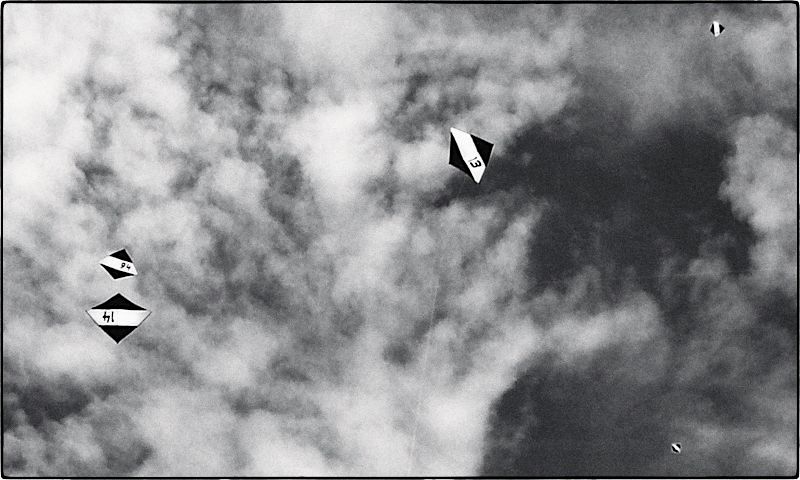The development of the zero wind kite
On the invention of the single line zero wind kite to the emergence of the agile, radical light-wind kite "The urban ninja" and the publication of the project.
Bill Wilson talking to Thomas Horvath.

An interview with the designer of the synergetic kite
Bill Wilson: Thomas answers some of the questions about his inspiration and motivation to develop and produce these cool single line kites.
Bill Wilson: Who is Thomas Horvath?
Thomas Horvath: My parents came to Switzerland as refugees in the Hungarian revolution in 1956. Born in Switzerland, I now live and work in Zurich, which is a fast and dense city, an adequate environment for The Urban Ninja.
I studied architecture at the Swiss Federal Institute of Technology ETH in Zurich. Then I worked a couple of years with renowned architects before I started my own small studio for architecture and industrial design. I have now reduced the architectural activities to invest in professional kite development and business.
My passion is still floating in the wide sky with a prototype, which isn't good enough yet and needs some tweaking.
Bill Wilson: How did you get started in kiting?
Thomas Horvath: While studying architecture, I was interested in light, collapsible structures, often designed for temporary purposes. In this context, tetrahedral principles and fuller’s tensegrity structures are investigated. In those years I knew, that someday I will be constructing kites.
Years later I started kiting with the first Benson and Wolfe kites, but due to no wind in the Swiss evenings, I soon switched to light-wind kites like the most beautiful white Isis by Pierre Marzin. Even these highly developed floaters need quite some constant wind to hang loose with them.
Bill Wilson: What is a synergetic kite?
Thomas Horvath: I think of synergy in three aspects:
Structural: The dynamic interaction of the frame with the membrane, intensified by air pressure and input of the flyer provides a strong, but flexible arrangement. The whole structure is a pragmatic tensegrity approach.
The synergy in flight: While gliding, my flyers benefit of their nature of a kite, like the extremely low wing loading. Thus while stalling, they don’t fall down, and those neutral moments of zero energy are the decisive moments for piloting them. In kite mode, while pulling them up into the sky, their profiled wings develop much more lift than their weight is, so they climb very efficiently with only a minimal loss of line length.
Air, the flying object and me: These are my most quiet and beautiful moments.
Bill Wilson: It seems to be part glider, trick kite, single line kite. How did you get inspired to design these kites?
Thomas Horvath: I wanted kites to play around with in calm evenings. To fly without wind, there must be motion, and it’s essential, that I can influence the motion. I learned, that such a flying device would have to glide away over longer distances and had to be steerable.
I began to reduce stability down to the minimum to make the designs slower, but agile in order to get a direct response. This enabled the kites to do tight flat-spins, resulting in long airtimes even in confined environment.
Bill Wilson: What is the Urban Ninja project?
Thomas Horvath: The Urban Ninja is an attempt to provide an easy to fly gadget or device for everyone including kids, not only for kite fans. It can be flown anywhere and anytime. It’s called a project because I plan to publish variants: A tiny indoor variant (which I flew in the studio a few minutes ago) and an even more aggressive highly unstable one, but that won't be next month.
It turned out, that people like to fly "The urban ninja" in the crowded sky at a festival and when the winds die in the evening and there’s plenty of space in the sky, they are soaring around with "The long way home" and the other wing-designs. It would be nice to see a growing community of ninja fliers. With a number on the sail, you invite others to fly around with you, best on a narrow spot.
Bill Wilson: Why did you decide to create The Urban Ninja and offer the plans online?
Thomas Horvath: To share something with the community, to promote active single line kiting in urban space and for people interested in kite innovations.
Since this interview, Thomas has added another article describing how his kites fit within the kite world, with samples of different approaches in the context.
January 2007